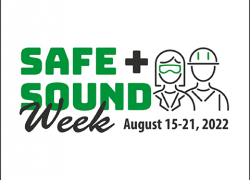
If employees voluntarily leave a company and there’s an increase in turnover, it could mean there are challenges within the organization, such as low employee morale or ineffective management practices. Tracking and evaluating worker turnover rates can help identify potential problems as well as proactive measures to address them. The same principle applies to safety and health. If your goal is to build the safest possible workplace, you should strive to effectively assess risk and eliminate hazards using leading indicators – in other words, signs of the strengths and weaknesses of your safety and health management.
At the Occupational Safety and Health Administration, our mission is to ensure the safety and well-being of workers. Part of that mission is using all our available tools to help employers go beyond compliance to improve their safety and health work culture. In our ongoing efforts to protect workers and establish safety as a core value in every American workplace, we recognize the power of leading indicators.
What are leading indicators?
Leading indicators are proactive and preventive measures that provide valuable insights into the effectiveness of safety and health programs, enabling employers to assess the risk of injuries or illness before they occur. They include measures such as participation levels in monthly safety meetings; worker contributions to safety, such as the number of hazards employees identify to management; or data on vehicle maintenance, such as the percentage of on-time brake pad replacements completed.
Many safety and health programs only focus on lagging indicators, such as injury rates. While lagging indicators can evaluate the overall effectiveness of safety at your facility, they rely on events that have already occurred. An employer that can identify and track the right leading indicators can be more prevention-focused on hazards not yet identified, especially those that can cause the most serious events. The challenge for many small and medium-sized employers is identifying the right leading indicators.
The journey toward leading indicators
In 2019, OSHA hosted a public meeting to gather feedback on the use of leading indicators. Recognizing the significance of these proactive measures, we published guidance on Using Leading Indicators to Improve Safety and Health Outcomes. These initial efforts aimed to help employers understand leading indicators and encourage their adoption as essential components of safety and health programs.
Building on this foundation, we are now embarking on the next phase — educating businesses of all sizes about the benefits of leading indicators. Recognizing that every workplace, regardless of its scale or industry, should prioritize safety and health, we have developed a list of targeted questions to gather information on the leading indicators currently in use and their impact on safety and health programs.
Creating a leading indicators resource
Armed with invaluable insights from stakeholders, we aim to develop an inclusive leading indicators resource. This resource will cater particularly to small- and medium-sized employers, equipping them with the knowledge and tools necessary to integrate leading indicators into their safety and health program. By providing guidance and practical solutions, OSHA strives to empower businesses of all sizes to prioritize worker safety and ensure that each employee returns home safe and sound at the end of the day.
Join the conversation
Employers, workers and safety professionals all have a role to play in shaping the future of workplace safety. OSHA invites stakeholders to submit their comments and insights via the Federal eRulemaking Portal by July 17, 2023. By actively participating in this process, stakeholders can contribute to developing the leading indicators resource and help foster safer work environments nationwide.
Doug Parker is the assistant secretary of labor for occupational safety and health. Follow OSHA on Twitter at @OSHA_DOL and on LinkedIn.
Editor's note: The first paragraph was updated on 6/14 to clarify the analogy.

 U.S. Department of Labor Blog
U.S. Department of Labor Blog







